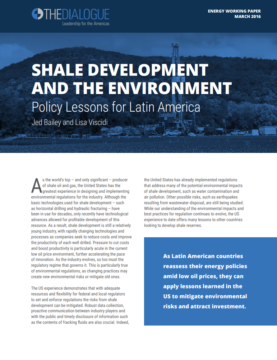
Latin America Clean Transport Forum
The electrification of the transportation sector is crucial to reducing carbon emissions and tackling global climate change.
This post is also available in: Español
Latin America faces unique transportation challenges. As a developing region, Latin America’s growth in oil demand and greenhouse gas (GHG) emissions is closely linked to economic growth. Latin America is largely a region of middle income countries, with sizeable and fast-growing middle classes that enjoy improving purchasing power. As a result, demand for private light-duty vehicles is mushrooming. Demand for heavy-duty vehicles used mainly to transport commercial goods is also growing as economies expand.
This contrasts sharply with developed countries like the United States and Europe where oil demand and emissions have peaked as populations are scarcely growing, most adults already own cars, and improved energy efficiency has led to declines in energy and emissions intensity. Latin America also contrasts with lower income regions, such as Africa, where much smaller portions of the population can afford private vehicles and car ownership is growing at a slower clip.
Latin America is also unique in its high rate of urbanization—some 80 percent of inhabitants live in cities. This reality exacerbates problems of congestion and air pollution, but it also creates opportunities to meet much of the population’s need with public mass transit. Finally, Latin America also suffers from extremely weak fuel efficiency, vehicle emissions, and fuel quality standards and enforcement. As a result, each kilometer driven consumes more fuel and emits more pollutants than in countries with stronger regulation.
Addressing the transportation challenge requires an integrated approach. Firstly, Latin American countries need to stem the growth in demand for private cars by improving public transportation systems and non-motorized transportation options, such as cycling and walking. Secondly, Latin American countries urgently need to improve fuel efficiency and fuel quality. Thirdly, Latin American countries need to do more to diversify fuel sources for transportation.
This chapter analyzes the transportation challenge in Latin America and provides critical policy solutions. The chapter focuses on passenger road transportation because although freight transport is responsible for about half of Latin American road carbon emissions, there is more potential to reduce emissions from passenger transport. This is in part because Latin America’s high urbanization rate, which is projected to reach almost 90 percent of the population in 2050, makes it feasible for mass public and nonmotorized transportation to cover a large portion of the population’s mobility needs. Indeed, urban population density is inversely correlated with GHG emissions from land transport. In addition, there is great potential to expand electrification for passenger vehicles but current battery technology does not allow heavy-duty vehicles to travel the long distances needed for freight transport. Meanwhile, non-road transport—including marine, aviation, and rail—remains very limited making up only one quarter of the region’s carbon emissions from transportation.
This is an excerpt from the chapter The Energy of Transportation: A Focus on Latin American Urban Transportation, part of the book Energy & Transportation in the Atlantic Basin edited by Paul Isbell and Eloy Álvarez Pelegry. The book is a product of the Jean Monnet Network on Atlantic Studies, supported by the Erasmus+ Programme of the European Union.
The electrification of the transportation sector is crucial to reducing carbon emissions and tackling global climate change.
Electric vehicles are a critical part of a clean transport agenda, but strong policy incentives are needed to promote widespread EV adoption in Latin America.
As Latin American countries reassess their energy policies in light of lower oil prices, there is an opportunity to apply lessons learned from the US experience to enact regulations that mitigate environmental risks, strengthen public support, and attract investment.


